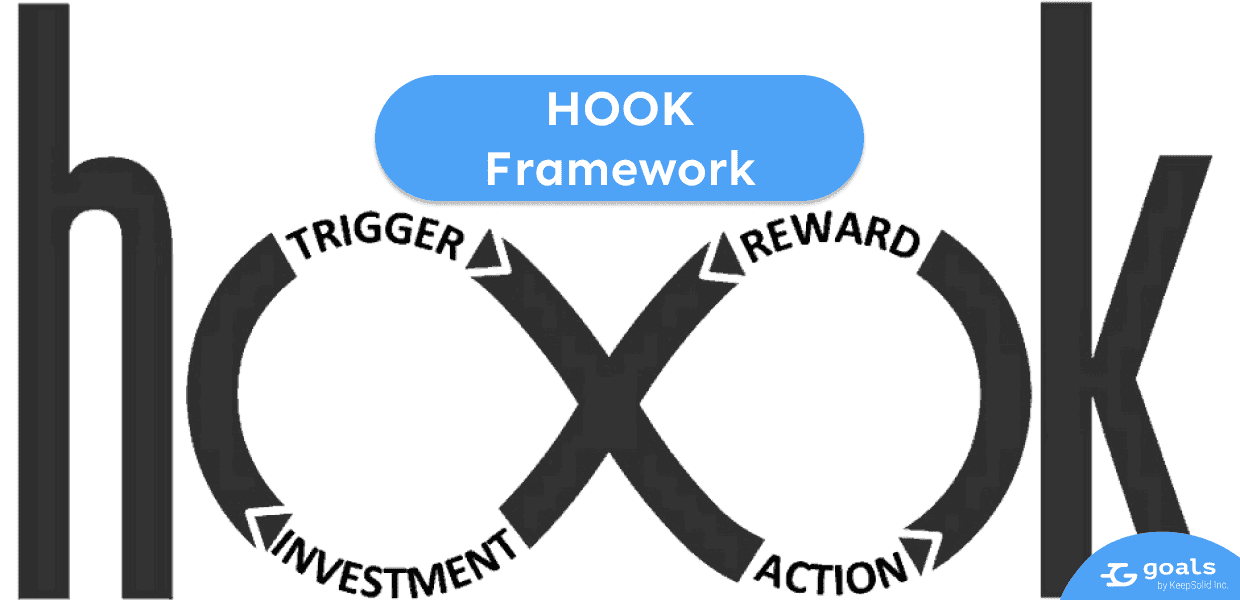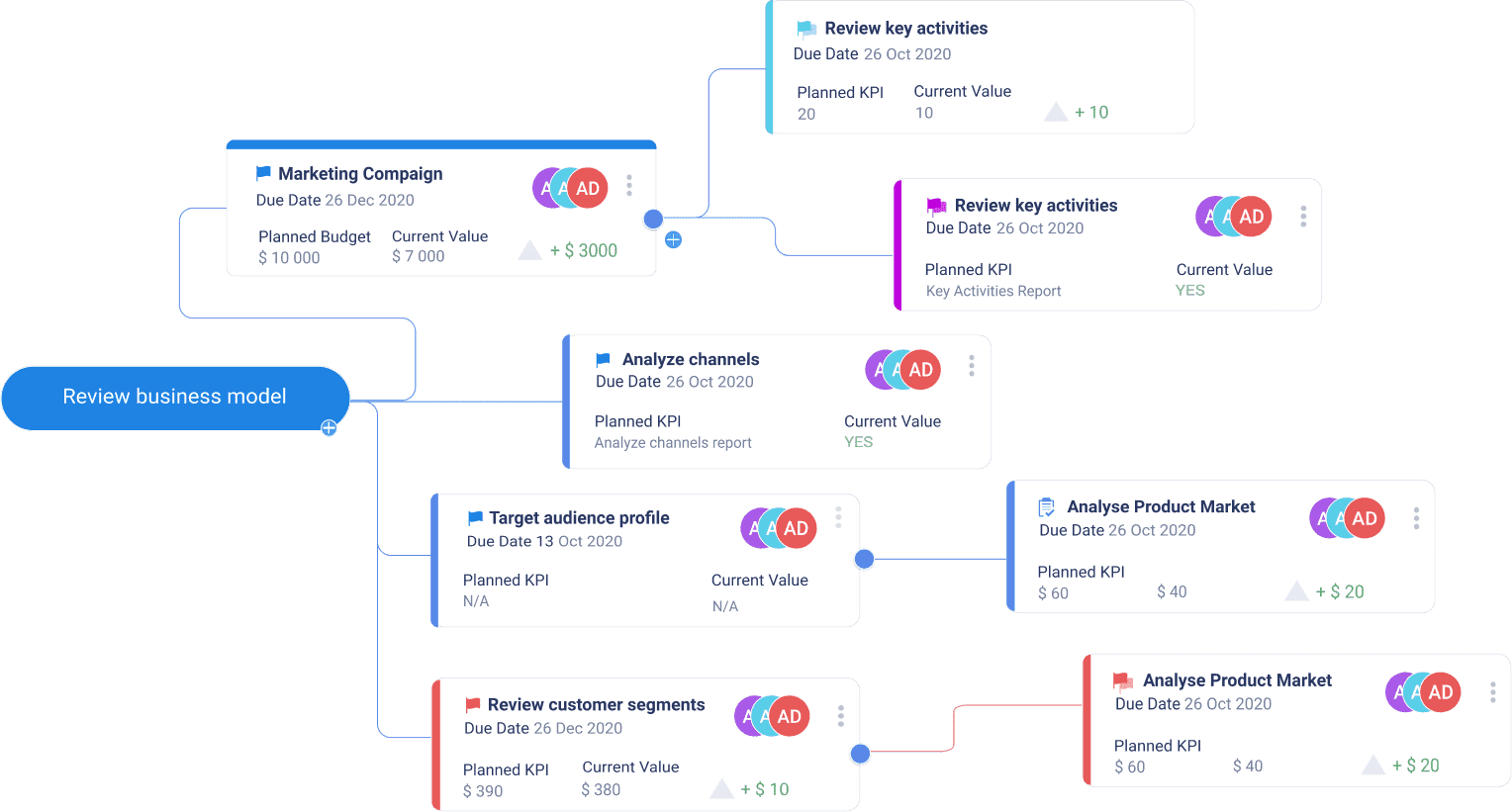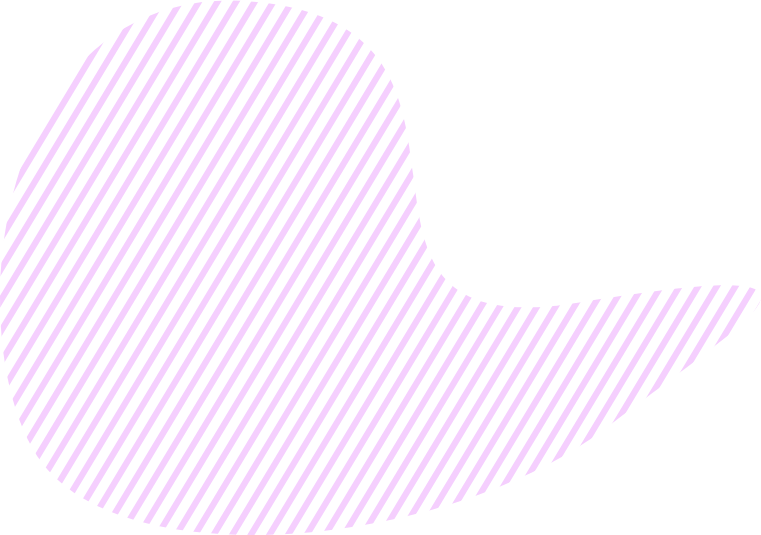What is Hook Framework?
The Hook framework was introduced by Nir Eyal to help businesses link their solutions with a specific user’s problem with enough frequency to form a habit and get the solution anchored in the user’s mind.
Hook Phases

The Hook Model has four phases that a user must pass to get hooked to the product or service and keep using it in future:
Trigger
This is the first phase where the user feels a need or a desire for the first time. Each trigger has an underlying cause. For example, if we do not rest for a long time, we feel tired. In this case, our need is Rest, and the trigger which signals this need is Tiredness.
Triggers can be external and internal:
- External Triggers are embedded with information, instructing a person how to act. These can be of four types:
- Paid triggers that are created to catch users’ attention to a product;
- Earned triggers that are earned by the time spent on the product;
- Relationship triggers that are communicated as recommendations from another person;
- Owned triggers that are readily available and users can enable or hide them on their own.
- Internal Triggers are natural and subconscious and manifest automatically in our minds, such as Hunger, Thirst, Loneliness etc.
Action
The Action is the simplest step or the minimum interaction with the product that is needed to reach a goal and get the reward. A series or tasks form an activity: for example, if we are tired, we can sleep. For this, we’ll perform several actions, like going to the bedroom, undoing the bed, undressing, and turning off the lights. A series of tasks is also known as the User Journey Map. In our example, we have the User Journey Map of going to bed.
Reward
The Reward is the user’s objective, the reason they are using the product. At the same time, the desire for a reward can be skillfully crafted to create a dopamine ruckus that users cannot resist. For instance, creating infinite variability of rewards by playing with the rewards schedule and size creates a powerful addiction and persistent pursuit of such rewards. There are three types of variable rewards:
- Rewards of the Tribe that make us feel connected with other people by promising recognition from the others or giving an opportunity to extend our network. They rely on social affirmation and the need to be seen. The most famous example is the Like on social media.
- Rewards of the Hunt related to material resources and information, such as winning a lottery, finding the best deals in shops or finding useful information in Google. These rewards anchor on our excitement of finding something we are looking for.
- Rewards of the Self give us the feeling of self-accomplishment and are related to competency and mastery. You feel proud of yourself and want to perform even better. These rewards are quite common in video games where a user is encouraged to build up and constantly improve their character.
Investment
The investment is the amount of effort required in the form of time or money that will be spent on the product while performing the actions to reach the reward. For example, many products offer a trial period and when the user has spent some time on the product and gained certain rewards, such as the first gear in a video game, or the first completed course on an e-learning platform, they will more likely continue using the product.
The job of a product designer is, therefore, to form the right triggers and make the minimum action as effortless as possible, because the more complicated the action is, the more motivation is required to use a product, and the higher the chance to lose the user. Afterwards, a product designer thinks of possible variable rewards to feed users’ attention and gets users to invest, setting themselves up for the new Trigger, and creating preference and, ultimately, a habit.



